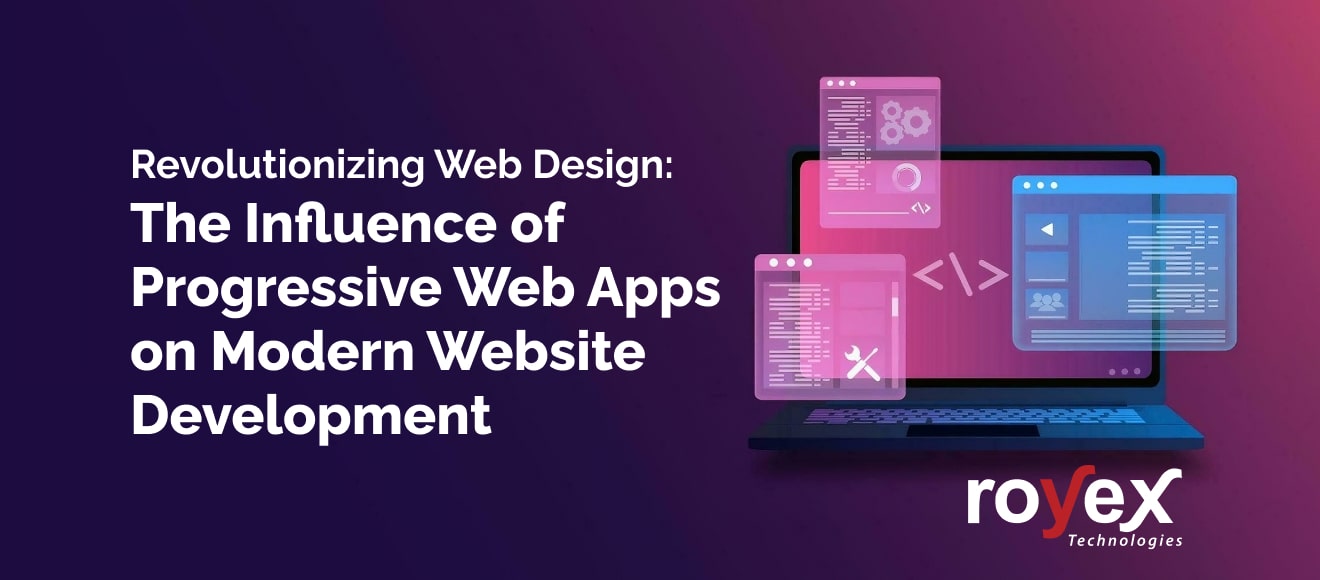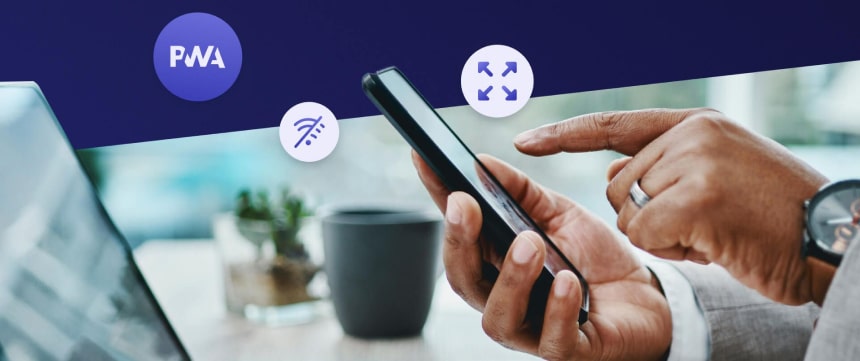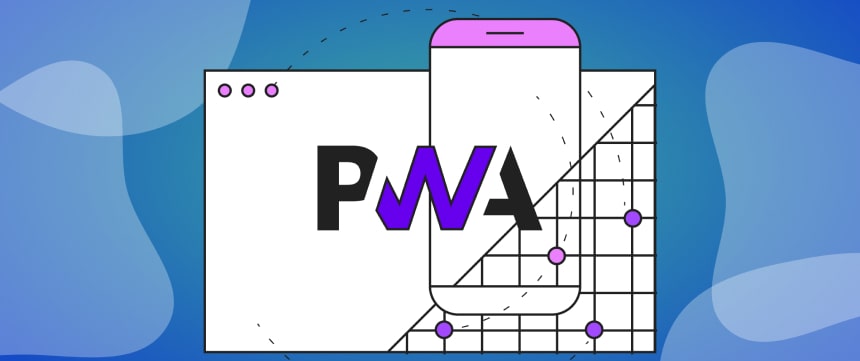
Revolutionizing Web Design: The Influence of Progressive Web Apps on Modern Website Development
Remember the frustration of a slow-loading website, especially on unreliable internet? Or the annoyance of having to download separate apps for every service you use? Well, say goodbye to those woes! We're entering a new era of web design where the lines between websites and apps blur, offering unprecedented speed, convenience, and functionality. Those relics of the past are fading fast, thanks to the rise of Progressive Web Apps (PWAs).
Imagine a website that feels as smooth and responsive as a native app, works even when you're offline, and sends you timely updates directly to your device. That's the magic of PWAs! This introduction isn't just about technology, it's about transforming how you interact with the web. PWAs represent a new approach to web development that combines the best features of traditional websites with the functionality and user experience of native mobile applications.
In this article, we'll delve into the transformative impact of PWAs on website design. We'll explore their key features, uncover their benefits, and shed light on the design considerations that unlock their full potential.
Understanding Progressive Web Apps and its Key Features

Progressive Web Apps are web applications that leverage modern web technologies to provide a seamless and engaging user experience across various devices and platforms. Unlike traditional websites, PWAs are designed to be fast, reliable, and responsive, offering users a native app-like experience without the need for installation from an app store.
Traditional websites, while offering accessibility and information, often suffer from limitations like slow loading times, limited functionality, and dependence on an internet connection. PWAs address these pain points by leveraging modern web technologies and design principles. They offer an app-like experience, complete with:
-
Responsiveness: PWAs are built using responsive design principles, ensuring that they adapt seamlessly to different screen sizes and orientations, whether on desktops, smartphones, or tablets.
-
Offline access: PWAs can store data locally, enabling users to interact with content even without an internet connection. This is particularly beneficial for users with unreliable internet access or on limited data plans.
-
App-Like Interface: PWAs are designed to look and feel like native mobile applications, with features such as smooth animations, full-screen mode, and immersive user interfaces.
-
Push notifications: PWAs can send real-time updates and alerts directly to the user's device, similar to native apps. This enhances engagement and keeps users informed of important information.
-
Home screen installation: Users can add PWAs to their home screen, creating a dedicated icon for quick and easy access, just like a native app. This increases discoverability and encourages repeat visits.
-
Fluid animations and transitions: PWAs leverage features like service workers and Web Assembly to deliver smooth and responsive interactions, mimicking the performance of native apps.
-
Cross-platform compatibility: PWAs work seamlessly across different devices and operating systems, eliminating the need for separate app development for each platform.
Benefits for Users and Businesses

The emergence of PWAs has had a profound impact on the field of website design, influencing developers to rethink their approach to creating web experiences. Some key ways in which PWAs have influenced website design include:
-
Focus on Performance: With performance being a critical aspect of PWAs, website designers are placing greater emphasis on optimizing speed and responsiveness. This includes minimizing file sizes, reducing page load times, and prioritizing content delivery for enhanced user experience.
-
Mobile-First Approach: PWAs are inherently mobile-friendly, catering to the growing number of users who access the web via smartphones and tablets. As a result, website designers are adopting a mobile-first approach, ensuring that websites are designed and optimized for smaller screens before scaling up to larger devices.
-
Enhanced user experience: PWAs blur the lines between websites and native applications, offering a seamless user experience that transitions seamlessly between online and offline modes. Website designers are incorporating PWA features such as offline caching, push notifications, and installability to create more engaging and immersive web experiences. Moreover, PWAs offer faster loading times, offline access, and intuitive interactions, leading to a more engaging and satisfying experience for users.
-
Increased engagement and conversions: By providing app-like features and eliminating friction points, PWAs encourage users to spend more time interacting with the content, leading to higher conversion rates for businesses.
-
Improved SEO: PWAs are discoverable through search engines like native apps, potentially boosting organic traffic and search ranking.
-
Cost-effectiveness: PWAs eliminate the need for developing and maintaining separate native apps for different platforms, saving businesses time and resources.
-
Wider reach: PWAs reach a broader audience by working across different devices and operating systems, without requiring app store approvals.
Design Considerations for PWAs

While PWAs offer numerous benefits, designing them effectively requires careful consideration:
Progressive Enhancement
Ensure basic functionality works on all devices, while progressively adding app-like features for compatible browsers.
-
Start with a solid foundation: Every user, regardless of device or browser, should access core content and functionality smoothly. This includes clear text, essential images, and basic navigation.
-
Layer on PWA features progressively: Identify which app-like features (offline access, push notifications) benefit your target audience and gradually introduce them to compatible browsers.
-
Test thoroughly: Ensure each layer enhances the experience without compromising performance or accessibility for less capable devices.
Responsive Design
Adapt layouts and interactions seamlessly across different screen sizes and devices.
-
Embrace fluidity: Layouts and interactions should adapt gracefully to various screen sizes and orientations, from desktops to smartphones.
-
Optimize touch interactions: Design for fingers, not cursors. Prioritize larger buttons, clear spacing, and intuitive gestures.
-
Consider context: Tailor the experience based on the device. Show a map with directions on mobiles, but offer detailed information on desktops.
Service Worker Implementation
Ensure service workers are implemented efficiently to manage caching and offline functionality.
-
Cache strategically: Prioritize critical content and assets for offline access, considering user needs and data limitations.
-
Update wisely: Balance offline availability with freshness. Define clear update strategies to ensure users get the latest information when online.
-
Test rigorously: Validate service worker functionality across different network conditions and browsers to avoid offline hiccups.
Clear Visual Hierarchy
Design intuitive navigation and user interfaces that are easy to understand and interact with.
-
Clarity is king: Prioritize intuitive navigation with clear labels, easily identifiable buttons, and a logical information flow.
-
Minimalism wins: Avoid clutter and focus on essential elements. White space and strategic use of typography enhance readability.
-
Accessibility in mind: Employ high contrast, alternative text for images, and keyboard navigation to cater to diverse users.
Performance Optimization
Prioritize fast loading times and smooth interactions to deliver a seamless app-like experience.
-
Code with care: Minify and optimize code, leverage browser caching, and minimize external dependencies to ensure lightning-fast loading times.
-
Image optimization: Resize and compress images strategically, considering quality and data usage for different devices.
-
Animation finesse: Utilize animations sparingly and optimize them for smooth performance without sacrificing responsiveness.
The Future of Web Design
PWAs are not just a trend; they represent a significant shift in how we interact with the web. As technology continues to evolve, PWAs are poised to become the dominant standard for website design, offering an immersive and engaging experience that bridges the gap between websites and native apps. For businesses and designers, embracing PWAs will be crucial to remain competitive and deliver exceptional user experiences in the age of mobile-first interaction.
Conclusion
Progressive Web Apps represent a significant evolution in web development, offering a compelling alternative to traditional websites and native mobile applications. With their focus on performance, responsiveness, and user experience, PWAs have reshaped the landscape of website design, influencing developers to adopt new approaches and technologies to create more engaging and functional web experiences. As the demand for fast, reliable, and immersive web experiences continues to grow, PWAs are poised to play an increasingly central role in shaping the future of digital interaction.
Why Choose Royex Technologies for Website Design in Dubai
Royex Technologies is a leading website design company in Dubai, providing website development, e-commerce & mobile application development on all scales with quality & flexibility. We have already developed various websites on WordPress, Magento & Umbraco to provide to our clients. Our team of developers has years of experience in website development. We have worked on various projects and know what it takes to build successful websites. We stay up-to-date with the latest technologies and trends in the industry to deliver the best results. Furthermore, we understand that each client has unique needs and requirements. We offer customized app development services to cater to your specific needs. We work closely with you to understand your goals and provide solutions that fit your requirements.
Contact us via email at info@royex.net or call us at +971566027916 with your requirements. Let’s make it happen.




